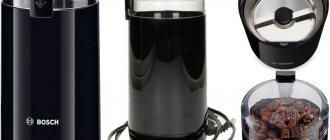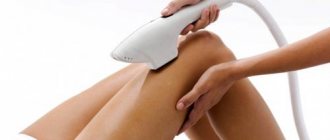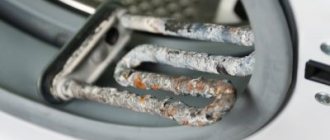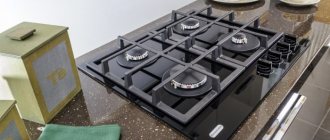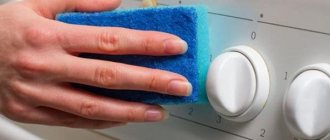Photoepilator: contraindications and consequences
Photoepilation is a method of getting rid of excess hair using high-frequency light pulses. The equipment used for photoepilation sessions in salons is designated by the abbreviation IPL, which means “Intense Pulsed Light”.
We will help you decide which is better - photoepilator or laser.
IPL system used in photoepilation salons
The principle of operation of the photoepilator
IPL devices simultaneously produce light waves of different lengths, resulting in an intense flow of energy that affects the hair follicles. Household photoepilators for self-use also work on a similar principle.
Home photoepilator is compact and convenient
Exposure to light rays causes heating and further destruction of the follicles, a process called photothermolysis. Light energy only affects follicles in the active growth stage, which is up to 80% of all available follicles.
The remaining 20% are in the inactive phase and are located deep in the skin. The photoepilator cannot act on dormant follicles, which is why several sessions of this procedure will be needed to completely remove hair.
Initially, IPL systems were developed to treat age-related skin manifestations - age spots and dilated blood vessels. Women who regularly use photoepilation note a noticeable rejuvenating effect after the procedure.
Photo flashes destroy the follicle by affecting the melanin contained in the hair. Melanin is a pigment, the amount of which determines the color saturation of the hair. It turns out that the darker the hair and lighter the skin, the more effective photoepilation is.
In addition to photoepilation, epilator and waxing are popular.
The process of follicle destruction under the influence of photo flashes
How it works?
Photoepilation works by exposing the hair follicles to high-pulse light. To be more precise, the pigment melanin, contained in hair follicles and responsible for the growth and restoration of hairs, absorbs this light. Because of this, the procedure is effective only on dark and light brown hair.
Strong and sudden heating of the hair follicles leads to their spontaneous destruction and death. Because of this, hairs stop growing in the treated area.
The darker the hair in the photoepilation area, the faster and more effectively you can get rid of it. This is due to the large amount of melanin in brunettes compared to girls with light brown hair.
The effectiveness of photoepilator, its disadvantages and advantages
IPL systems have special settings to change the length and intensity of light waves. To prevent photoepilation from causing harm to a woman’s health, the radiation intensity is adjusted individually in each case. All people have different skin type and hair color, so the effect of the procedure will be different.
Photoepilation in the salon is carried out by an employee with a medical education who determines the client’s color type. Household photoepilators are designed in such a way that dermal cells do not lose their viability during the procedure. Simply put, a home photoepilator is safe for the skin, and strict adherence to the manufacturer’s instructions guarantees results.
Stages of the procedure
Like any cosmetic procedure for removing unwanted hair from the body, photoepilation includes three stages: preparing the skin for work, performing the technique, and caring for the treated area.
When performing photoepilation yourself, pay attention to all stages to get the maximum effect from the procedure, as well as ensure its safety.
Preparation
Photoepilation can be used to treat all areas on a girl’s body, even the most sensitive ones – the face and bikini. However, to ensure the safety of the technology, it is important to follow the recommendations for skin preparation:
- Avoid tanning for two weeks;
- A month before the procedure, refuse any hair removal method that involves removing hair from the roots;
- In 4-5 days, shave the treated area to grow hair length 2-3 mm;
- Before the procedure, make sure that the skin is free of inflammation, irritation and open wounds.
Leather treatment in the salon
When performing photoepilation in a salon, the girl’s main task is to grow the hair length in the working area to 2-4 mm. The wizard does the rest:
- The client lies down on the couch, exposes the work area, and puts on safety glasses.
- The master applies a special gel to the skin, which not only acts as a conductor for the device, but also has a cooling effect.
- The master smoothly moves the device over the skin, and then evenly distributes the light pulses.
- At the end of the procedure, the remaining gel is washed off.
- A soothing lotion is applied.
Most often, photoepilation does not cause pain to the girl, so there is no need to use an anesthetic for it. In addition, the photoepilator usually has an attachment that has an analgesic effect.
How to use a home photoepilator?
If you decide to do the procedure at home, pay attention to the peculiarities of working with the device in order to prevent the occurrence of consequences after incorrect treatment of the skin.
The algorithm for performing the procedure is the same:
- Put a protective mask on your eyes and apply the gel to your skin.
- Point the device at the epidermis. If the indicator turns red, adjust the power or flash frequency of the device. If its color is green, start working.
- Place the photoepilator perpendicular to the skin. After the beep sounds, move it to another zone. In this way, treat the entire desired surface with it.
- Rinse off any remaining gel and apply a soothing lotion.
The photoepilator works quite quickly, so 20-25 minutes are usually enough to completely treat one area.
The effectiveness of a home photoepilator
The main question that concerns women: will a self-performed procedure be effective? Is it worth buying a photoepilator for independent use at home?
The effectiveness of the photoepilation device depends on the selected settings mode. After studying the instructions, you can determine your color type and set the optimal mode. But it should be taken into account that the color of skin and vegetation may differ in different parts of the body, so the settings need to be adjusted. And, of course, the manufacturers made sure that even at maximum power the woman could not harm her own health.
Typically, a course of five to ten procedures with an average interval between them of four to six weeks is sufficient to remove unwanted vegetation. After the first treatment, there is usually no immediate effect. The vegetation falls out gradually, over the course of about a week.
With each subsequent procedure, hair growth activity will decrease. From session to session, the vegetation will thin out and become lighter. After completing the course, in most cases, body hair disappears for several years, and in some - forever.
In order to completely get rid of vegetation by summer, you need to start a course of photoepilation no later than the end of winter.
Find out which photoepilator is best for home use.
After a course of photoepilation, hair disappears for several years
Which photoepilator is better to choose for home?
The difference between professional and home appliances is significant. They differ in cost and effectiveness of the procedure. Professional photoepilators are much more effective. Hairs treated with conventional household appliances are often not completely destroyed and grow back over time. Therefore, when using a photoepilator at home, more procedures are required.
Advice! To get quick results, it is recommended to buy premium models. They work similarly to professional devices.
The main rule in choosing a photoepilator is cost. The higher it is, the better the quality of leather treatment and the longer the service.
There are two types of models: battery-powered and mains-powered. The first ones are completely mobile and do not depend on electricity.
Convenient to take with you on a trip, but they need charging and battery life is limited
Network photoepilators are cheaper. They have more attractive parameters compared to battery models.
Pros and cons of photoepilator
Like any technique for maintaining beauty, photoepilators have certain pros and cons, but we hasten to please women - there are many more advantages. These include:
- No pain when performing photoepilation.
- The procedure is short: a session takes on average from five to 30 minutes.
- Non-contact principle of exposure - the skin is not injured, the risk of infection and the likelihood of ingrown hairs are eliminated.
- Hair removal on any part of the body, as well as on the face.
- Side effect of rejuvenation: during photoepilation, collagen production is stimulated, the skin is smoothed.
The only disadvantages include the high cost of the device and the inability to remove vellus, light or gray hair. Blondes and women of elegant age should refuse photoepilation and choose another method of hair removal.
A good alternative in this case would be electrolysis. This method of getting rid of excess hair does not limit its use according to the color type of hair and skin. In addition, this is the only method that guarantees a 100% result.
The disadvantages of a photoepilator often include the possible occurrence of burns, but such cases are rare, since the developers initially limited the intensity of exposure to light rays in household appliances. If burns appear on the skin, most likely this is due to improper use of the device and failure to follow the instructions.
Photoepilation technologies
There are two photoepilation technologies:
- IPL;
- Elos.
They are similar in the principle of influencing the hair follicles, but the hair removal procedures differ from each other.
Features of IPL
IPL technology appeared in Israel thanks to Lumenis Ltd. This system consists of creating and transmitting a flash of light using a special lamp.
Photoepilation devices using this technology act on hairs that are in the growth stage at the time of the procedure. There are “dormant” follicles that are not affected by the device. Therefore, it becomes necessary to carry out the procedure several times until all the bulbs are destroyed.
IPL photoepilation
IPL devices have a limited number of flashes because the lamps in them cannot be replaced.
Recommendation! When purchasing such a device, you should select the number of flashes depending on the area where you want to remove hair. For armpits or face, 50-80 thousand flashes will be enough; for legs and arms, a larger number will be required.
IPL technology is used for hair removal on light skin with dark hair. To make the result more noticeable, you can apply sunscreen with a low level of protection to your body before the procedure. When using a photoepilator on sensitive skin, after hair removal it is worth moisturizing it with cream.
The disadvantage of this system is the inability to affect light hairs. And when used on dark skin, burns may occur.
Elos Features
This is a more modern technology that has several advantages over IPL. The principle of its operation is to combine a light pulse and a bipolar current. However, such epilators are more bulky and less mobile. Also, their cost is much higher than previous models.
Elos Features
Interesting! Thanks to the efficiency achieved by combining two types of impulses, photoepilators with this system can remove both dark and light hairs. They are also safe for all skin types.
In addition, Elos technology has several other advantages:
- Can be used on sensitive and dry skin;
- Suitable for treating skin with inflamed areas;
- As a result of several procedures, an excellent effect is achieved and excess vegetation does not appear for several years.
Advantages and disadvantages
Like any other electrical device, photoepilators have both advantages and disadvantages.
The advantages of the device include the following:
- Safe for the skin when used correctly;
- No pain;
- The result can be seen after the first procedure;
- A photoepilator for home use does not take up much space;
- Easy to use and care for the device;
- Thanks to the sufficiently large window through which the pulse is released, the device processes a large area in a short amount of time;
- Works effectively even in hard-to-reach places.
Disadvantages of the device:
- Quite a high cost of the device;
- Inability to remove light and vellus hair with IPL technology;
- Inability to combine other types of hair removal with photoepilation;
- Prohibition on using the device after sunbathing;
- Possibility of getting burned if used incorrectly.
Photoepilator - contraindications and consequences
The photoepilator has contraindications for use, which must be taken into account:
- Oncological diseases, including malignant formations on the skin.
- Inflammatory processes on the skin of various etiologies: atopic dermatitis, allergic reactions, eczema, psoriasis, herpes.
- Skin parasitic diseases: lichen, scabies.
- Injuries and open wounds of the skin.
- Varicose veins, even in the initial stage of development.
- The presence of a large number of moles.
- Diseases of the heart and blood vessels in the acute stage or in severe form.
- A number of diseases of the endocrine system.
- Lactation and pregnancy period.
- Age up to 18 years.
As you can see, there are contraindications and consequences for the photoepilator, the risks of which must be minimized. To do this, consult your doctor before purchasing the device.
Before the first session, consultation with a specialist is required.
Preparation for photoepilation
Photoepilation begins long before the first session. Two weeks before the first treatment, you should stop visiting the beach or solarium, as flashlights can cause burns on tanned and dark-skinned skin.
Next, you need to make sure that the hairs on the treated area are from one to three millimeters long. It is at this length that the photoepilator works most effectively. If hair is removed with wax, this should be done two weeks before the procedure. If you use a razor, it is enough to remove hair in the intended treatment area in two to three days.
Photoepilation cannot be performed during a course of antibiotics, antipsychotics and tranquilizers. These groups of drugs increase the susceptibility of the dermis to UV rays, which may cause burns.
On the day when photoepilation is planned, cleanse the skin with gentle hygiene products, dry the skin well, and then apply a cooling gel to the hair removal area. This will prevent possible discomfort during hair removal. During the procedure, wear special glasses, the availability of which must be taken care of in advance.
We also recommend that you familiarize yourself with the differences between an epilator and a depilator and find out which is better.
Professional cooling gel for all types of hardware hair removal
Setting up the photoepilator and performing the procedure
The instructions for photoepilators usually contain a color scale, which can be used to determine the color type of skin and hair and set the appropriate operating mode. In more expensive models, there is an automated detection system, and the device will adjust automatically, you just need to bring it to your skin and hair.
Comparative table of hair and skin shades in the instructions for the photoepilator
During processing, the photoepilation device emits sound signals, signaling the beginning and end of light exposure. There should be no pain during the process, otherwise we can talk about incorrect settings of the device.
The absence of any sensations is also not a good sign; in this case, we are talking about a weak impact and ineffectiveness of the session. During photoepilation, a slight tingling sensation and warmth are considered normal.
For the first time, photoepilation is recommended to be performed on the skin of the legs. The skin on the face, bikini area, and armpits is more delicate.
To get the best result in the armpit area, the skin needs to be as even as possible. If there are birthmarks in the treatment area, you can protect them using any universal cream or office corrector.
Check out our review of the best photoepilators for hair removal at home.

